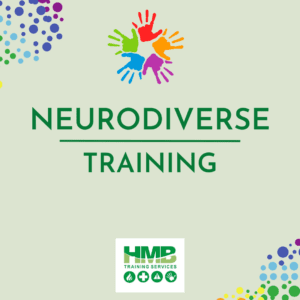Have you ever witnessed a child screaming, crying, or throwing themselves on the floor and wondered; —is this a tantrum or a meltdown? Tantrums vs meltdowns: Helping Your Autistic Child, is what we are going to explain in this blog.
While the behaviours may look similar on the surface, the causes and responses to these outbursts are very different.
Understanding the difference between a tantrum and a meltdown is crucial, especially for parents, caregivers, teachers, and anyone working with neurodivergent individuals. Misinterpreting a meltdown as a tantrum can lead to frustration and ineffective discipline while recognising the signs of sensory overload can help provide the right support.
Understanding Tantrums vs Meltdowns
Many people confuse meltdowns with tantrums because they can appear similar—both may involve crying, screaming, or physical outbursts. However, they are fundamentally different. A tantrum is a response to frustration and is often a way to seek attention or achieve a desired outcome. In contrast, a meltdown is an involuntary reaction to sensory overload or emotional overwhelm, where the individual loses control and cannot self-regulate. Recognising this difference is key to responding appropriately rather than misinterpreting the behaviour.
Understanding the distinction between tantrums and meltdowns is especially important for parents, teachers, and employers. For parents, knowing the difference helps in managing their child’s emotions with the right strategies instead of reinforcing negative behaviours. Teachers can create supportive classroom environments by recognising when a child needs sensory breaks rather than discipline. Employers who understand meltdowns can help provide an inclusive workplace where neurodivergent employees feel safe and supported. By recognising and addressing these behaviours correctly, we create more compassionate and effective support systems.
What is a Tantrum?
A tantrum is an emotional outburst that typically occurs when a child or individual is frustrated and trying to achieve a specific goal. It is a learned behaviour used to express dissatisfaction, assert control, or get a desired response from others. Unlike meltdowns, tantrums involve some level of control and can stop when the individual realises their behaviour is not effective or when they receive what they want.
Common Causes of Tantrums
Tantrums can be triggered by a variety of everyday frustrations, including:
-
Not getting what they want – A child may throw a tantrum when they are denied a toy, treat, or activity they desire.
-
Seeking attention – Some tantrums occur because a child wants attention from a parent, teacher, or caregiver. If they feel ignored, they may resort to dramatic displays to get a reaction.
-
Fatigue, hunger, or discomfort – When a child is overtired, hungry, or overwhelmed, they may be more prone to emotional outbursts, even over small issues.
Typical Behaviours During a Tantrum
Tantrums can vary in intensity, but they often include:
-
Crying, screaming, or shouting – Loud vocal expressions of frustration or anger.
-
Stomping feet, kicking, or throwing objects – Physical expressions of distress, especially in younger children.
-
Looking for a reaction from caregivers – The child may pause mid-tantrum to see if their behaviour is getting the desired attention.
-
Can stop if given the desired outcome or ignored – If a child achieves their goal (e.g., getting a snack), the tantrum may end instantly. Conversely, if they realize the behaviour isn’t working, they may stop on their own.
How to Handle a Tantrum
Managing tantrums effectively requires patience and consistency. Here are some key strategies:
-
Stay calm and consistent – Reacting with frustration can escalate the situation. Instead, maintain a calm demeanour and set clear expectations.
-
Offer choices and reinforce positive behaviour – Giving children small choices (e.g., “Would you like to walk or hop to the car?”) helps them feel in control and reduces frustration. Rewarding positive behaviour rather than reacting strongly to negative behaviour encourages better emotional regulation over time.
-
Teach self-regulation skills over time – Helping children learn to identify and manage their emotions (e.g., through deep breathing, counting, or using words instead of outbursts) will lead to fewer tantrums as they grow.
Understanding that tantrums are a normal part of development and a way for young children to express their frustrations can help parents and caregivers respond effectively. With the right approach, children can gradually learn better ways to communicate their needs and emotions.
What is a Meltdown?
A meltdown is an intense and involuntary response to sensory overload, overwhelming emotions, or extreme distress. Unlike tantrums, meltdowns are not goal-oriented behaviours meant to manipulate or seek attention. Instead, they occur when an individual, often a neurodivergent person, becomes completely overwhelmed and can no longer regulate their emotions or actions. Meltdowns can be distressing for both the individual experiencing them and those around them, as they involve a total loss of control rather than a choice to misbehave.
Common Causes of Meltdowns
Meltdowns are often triggered by situations where the brain is overwhelmed and unable to process any more input. Some common causes include:
-
Sensory overload – Excessive noise, bright lights, crowded spaces, or strong smells can overload the nervous system, making it impossible for the individual to function normally. For example, a supermarket with loud announcements, fluorescent lighting, and a lot of people can be overwhelming for someone sensitive to sensory input.
-
Changes in routine – Many neurodivergent individuals, particularly those with autism, rely on predictability to feel secure. Unexpected changes, such as a last-minute schedule change or an unfamiliar environment, can cause extreme distress.
-
Emotional overwhelm – A meltdown can occur when emotions become too intense to handle, whether due to frustration, fear, sadness, or anxiety. Even positive emotions, such as excitement, can sometimes lead to a meltdown if they become too overwhelming.
-
Social exhaustion – Interacting with others, especially in stimulating environments, can be mentally and emotionally draining. After prolonged social engagement, a neurodivergent person may reach a breaking point and experience a meltdown due to exhaustion.
Typical Behaviours During a Meltdown
Meltdowns can look different from person to person, but they often involve:
-
Intense crying, screaming, or shouting – The individual may become completely overwhelmed and express distress through loud vocalizations.
-
Rocking, flapping, or other self-soothing behaviours – Some individuals engage in repetitive movements to try to regulate their emotions.
-
Shutting down or becoming nonverbal – Instead of an outward explosion of emotion, some individuals completely withdraw, unable to respond or communicate.
-
Loss of control – Unlike a tantrum, where a child may pause to see if they are getting a reaction, a person in meltdown is genuinely unable to stop themselves.
-
No response to rewards, bribes, or discipline – Trying to reason with or punish someone in meltdown will not work. They are in a state of crisis and need support, not consequences.
How to Handle a Meltdown
Since meltdowns are a reaction to extreme overwhelm rather than a behavioural choice, they need to be managed differently than tantrums. Here’s how to help:
-
Reduce stimuli – If possible, remove the person from the overwhelming environment. Find a quiet space, dim the lights, reduce background noise, and minimise sensory input.
-
Offer comfort without overwhelming – Some people may want a hug, while others may not want to be touched at all. Respect their needs and offer support in a way that feels safe for them.
-
Use calming strategies – Techniques such as deep breathing, weighted blankets, fidget tools, or sensory-friendly spaces can help the individual self-regulate when they begin to regain control.
-
Allow time for recovery – A meltdown takes a significant amount of energy, and the person may feel exhausted afterward. They need time to recover in a safe and non-judgmental environment. Avoid punishing them for something they could not control.
Understanding meltdowns is essential for creating supportive environments, whether at home, in school, or at work. By recognising the signs and responding with patience and care, we can help neurodivergent individuals feel safe, respected, and understood.
Key Differences Between Meltdowns and Tantrums
| Feature | Tantrum | Meltdown |
|---|---|---|
| Cause | Desire for something, frustration | Sensory or emotional overload |
| Control | Child often has some control | Completely involuntary |
| Response to Rewards | Can stop if given attention or item | Does not stop with rewards or consequences |
| Resolution | Stops when child gets what they want or realizes it won’t work | Ends when the person has decompressed |
Tantrums vs Meltdowns: Helping Your Autistic Child
Supporting Neurodivergent Individuals
Providing the right support for neurodivergent individuals—whether children or adults—can make a significant difference in their well-being and ability to navigate daily life. Understanding meltdowns and recognising them as a neurological response rather than a behavioural choice is key to offering appropriate support.
Understand That Meltdowns Are Not Bad Behaviour
Meltdowns are not intentional acts of defiance or manipulation; they are a distress response to overwhelming stimuli or emotions. Recognising this helps shift the perspective from discipline to support. Instead of reacting with frustration, caregivers, educators, and employers should focus on reducing stressors and offering a calm, reassuring presence.
Avoid Punishment for Something They Cannot Control
Because meltdowns are involuntary, punishing a neurodivergent person for experiencing one is not only ineffective but also harmful. Consequences such as time-outs, scolding, or taking away privileges do not teach self-regulation—instead, they can increase anxiety, lower self-esteem, and create fear around expressing emotions. Instead of punishment, focus on helping the individual recover and learn coping strategies over time.
Create a Sensory-Friendly Environment
A supportive environment can help prevent meltdowns before they start. Simple adjustments can make a significant impact, such as:
-
Providing noise-cancelling headphones or quiet spaces in schools or workplaces.
-
Using soft lighting instead of harsh fluorescent lights.
-
Allowing flexibility in routines to reduce anxiety around unexpected changes.
-
Recognizing and respecting sensory sensitivities, such as food textures, clothing fabrics, or social expectations.
Teach Coping Strategies
While meltdowns cannot always be avoided, teaching self-regulation skills can help neurodivergent individuals develop tools to manage their emotions. Some effective coping strategies include:
-
Using a safe space – Creating a designated area at home, school, or work where they can retreat to self-regulate.
-
Sensory tools – Fidget toys, weighted blankets, chewable jewellery, or calming music can provide comfort.
-
Breathing and mindfulness techniques – Teaching deep breathing exercises or guided relaxation can help with emotional regulation over time.
-
Visual schedules and social stories – These can help prepare individuals for transitions and reduce anxiety around routine changes.
By understanding and accommodating neurodivergent needs, we can foster environments where individuals feel safe, supported, and empowered to thrive.
Our Neurodiversity Training – Tantrums vs Meltdowns: Helping Your Autistic Child
Neurodiversity Training for the Workplace for managers, HR personnel and colleagues. The session aims to increase awareness of neurodiversity in the workplace and allow attendees the opportunity to discuss workplace specific circumstances, develop strategies to support a neurodivergent workforce and identify the next steps for their organisation.

The course includes:
- Overview of Neurodiversity
- Why neurodiversity is important
- Associated neurodevelopmental conditions
- Neurodiversity, mental health and wellbeing
- Overview of Autism Spectrum Conditions
- Communication differences
- Strategies to ensure effective communication
- Cognitive Differences in autism
- Strengths and challenges
- Sensory Differences
- Breakdown of senses
- Hyper/Hypo sensitivity
- Environmental considerations
- Neurodiversity best practice in the workplace
- Examples of reasonable adjustments:
- Recruitment processes
- In the workplace
- Examples of reasonable adjustments:
Our Neurodiversity Training is fully interactive with lots of practical games and tasks to perform, including a lot of opportunities for discussions to embed learning. Tantrums vs Meltdowns: Helping Your Autistic Child
More information click here; https://www.hmbtrainingservices.co.uk/latest-news/offer/neurodiversity-training-for-the-workplace



